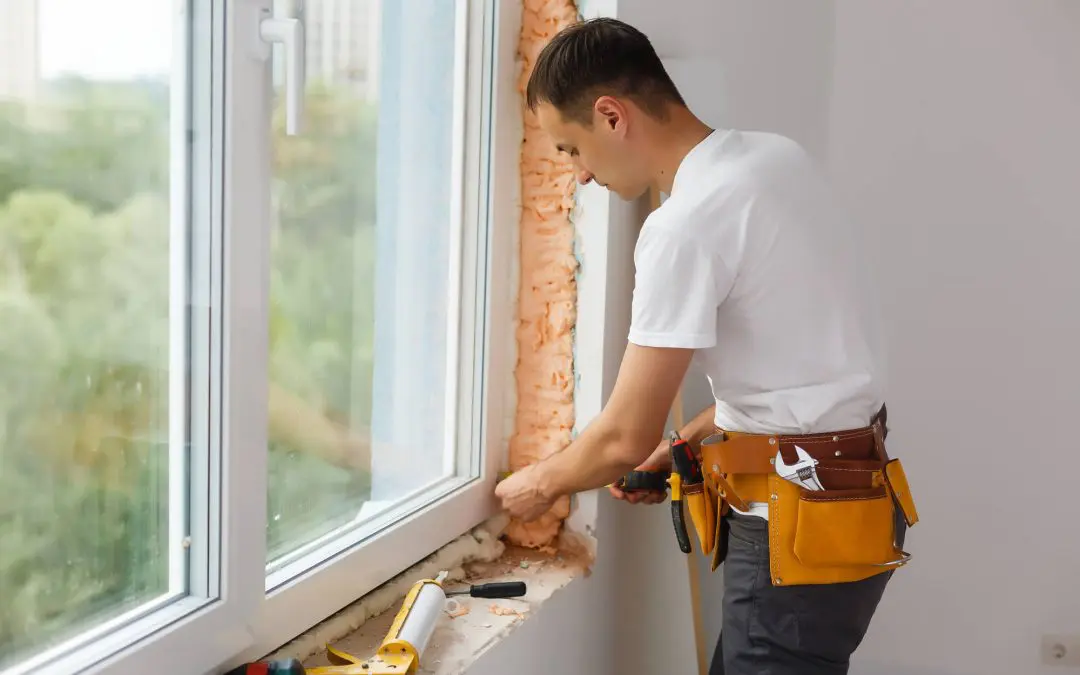Drafty windows can be a source of discomfort and energy inefficiency in a home. If you’re experiencing chilly drafts and high energy bills, addressing drafty windows should be a priority. Fortunately, there are several effective ways to fix drafty windows and improve the overall insulation of your home.
1. Fix Drafty Windows with Weather Stripping
One of the most cost-effective solutions for drafty windows is weather stripping. Apply adhesive-backed weather stripping around the window frame to seal gaps. This flexible material effectively blocks drafts and is easy to install. Clean the window frame thoroughly before applying weather stripping for better adhesion.
2. Caulking
Check for gaps and cracks in the window frame, and use caulk to seal them. Silicone or acrylic latex caulk is ideal for this purpose. Apply a thin bead of caulk along the gaps, and smooth it out with a caulk tool or your finger. This creates a durable seal that prevents cold air from entering your home.
3. Window Films Can Help Fix Drafty Windows
Window films, also known as insulating window film or shrink film, can be applied to the glass to add an extra layer of insulation. These films create an airtight seal, reducing heat loss. They are easy to install and are available in various styles, including clear, tinted, or decorative options.
4. Heavy Curtains or Drapes
Heavy curtains or drapes provide an additional barrier against drafts. Choose curtains with thermal lining, or use a thermal liner with your existing curtains. When closed, these curtains create an insulating layer that helps retain heat and block cold drafts.
5. Draft Stoppers
Place draft stoppers along the windowsill to prevent cold air from entering your home. You can purchase draft stoppers or create DIY versions using insulating materials like foam or fabric. Ensure that the draft stopper covers the entire length of the windowsill.
6. Install Storm Windows
If your budget allows, consider installing storm windows. These windows provide an extra layer of insulation and protection against drafts. They can be installed on the exterior or interior of existing windows and are particularly effective in extreme weather conditions.
7. Replace or Repair Window Seals to Fix Drafty Windows
Over time, the seals around windows may wear out or become damaged, leading to drafts. Check the condition of the window seals and replace any that are compromised. This may involve removing the old sealant and applying new weather-resistant sealant.
8. Consider Window Replacement
If your windows are old and beyond repair, replace them with more energy-efficient models. Look for windows with multiple panes, low-emissivity coatings, and gas fills between the panes for improved insulation.
Addressing drafty windows with these effective solutions creates a more comfortable living environment, reduces energy consumption, and lowers your heating costs. Regular maintenance and periodic checks will help ensure that your windows remain draft-free, contributing to a more energy-efficient and cozy home.
FAQ
Q: How do I know if weather stripping is the right solution for my drafty windows, and is it a permanent fix?
A: Weather stripping is effective for sealing gaps around windows, but its suitability depends on the extent of the drafts. It’s a cost-effective solution and provides a substantial improvement, but it may need replacement over time due to wear. Regular checks can help determine when a replacement is necessary.
Q: Can window films be used on all types of windows, and do they affect visibility?
A: Window films are versatile and can be applied to most types of windows. They are designed to be transparent, so they generally do not significantly affect visibility. However, it’s important to follow the installation instructions carefully to ensure proper application and minimal impact on clarity.
Q: Are storm windows a practical solution for year-round use, or should they be removed during warmer seasons?
A: Storm windows are effective for year-round use, providing an extra layer of insulation. While some homeowners choose to remove them during warmer seasons for increased ventilation, others opt for models with adjustable features that allow them to control airflow while maintaining insulation.
Q: How often should I check and replace caulk around my windows, and what signs indicate that it’s time for replacement?
A: Regularly inspect caulk for cracks or deterioration. Depending on weather conditions and the quality of the caulk, replacement may be needed every 5-10 years. Signs like visible cracks, peeling, or a loss of flexibility indicate that it’s time to reapply caulk for optimal draft prevention.
Q: What are the key features to look for when replacing old windows for improved insulation?
A: When replacing windows, prioritize features like multiple panes, low-emissivity coatings, and gas fills between panes. These features enhance insulation, reduce heat transfer, and contribute to energy efficiency. Look for ENERGY STAR-certified windows for a reliable standard of performance.
Wild Rose Property Inspection offers inspection services to homebuyers and sellers in the Alberta area. Contact us to request an appointment.

